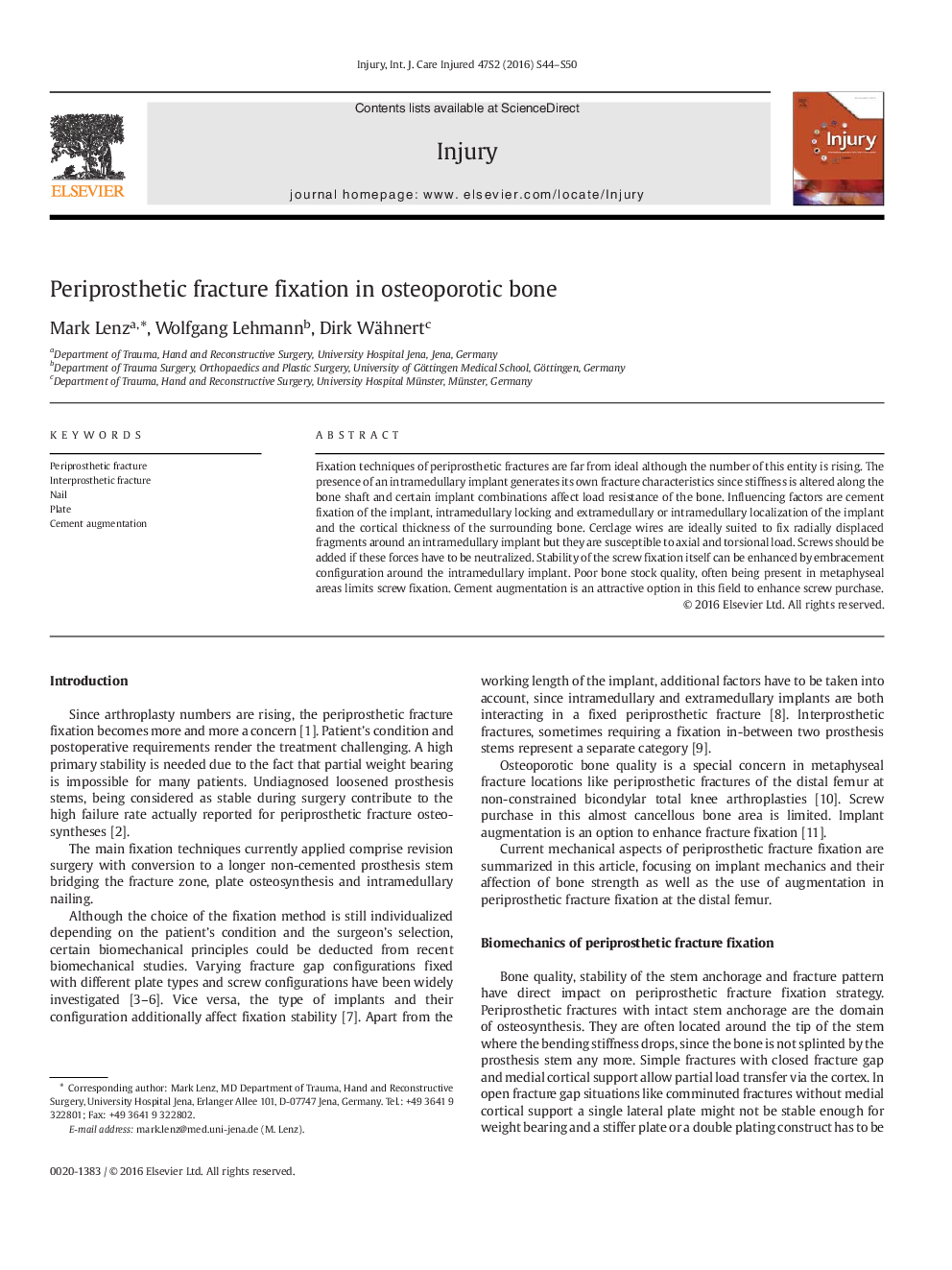| Article ID | Journal | Published Year | Pages | File Type |
|---|---|---|---|---|
| 3238980 | Injury | 2016 | 7 Pages |
Fixation techniques of periprosthetic fractures are far from ideal although the number of this entity is rising. The presence of an intramedullary implant generates its own fracture characteristics since stiffness is altered along the bone shaft and certain implant combinations affect load resistance of the bone. Influencing factors are cement fixation of the implant, intramedullary locking and extramedullary or intramedullary localization of the implant and the cortical thickness of the surrounding bone. Cerclage wires are ideally suited to fix radially displaced fragments around an intramedullary implant but they are susceptible to axial and torsional load. Screws should be added if these forces have to be neutralized. Stability of the screw fixation itself can be enhanced by embracement configuration around the intramedullary implant. Poor bone stock quality, often being present in metaphyseal areas limits screw fixation. Cement augmentation is an attractive option in this field to enhance screw purchase.
